#daenerys details
Explore tagged Tumblr posts
Text
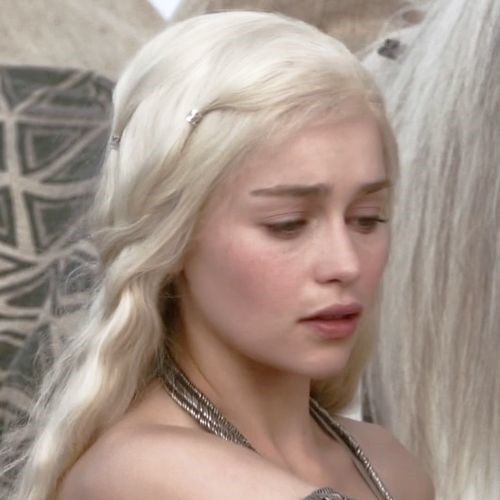
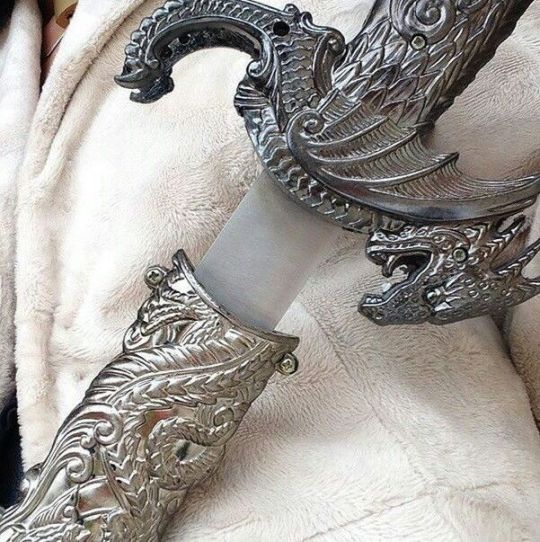

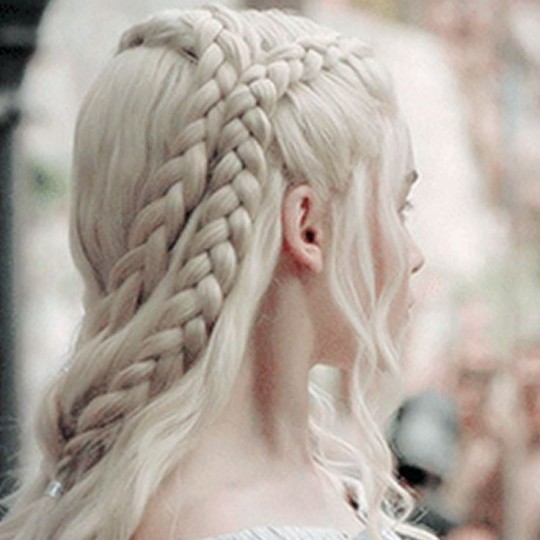

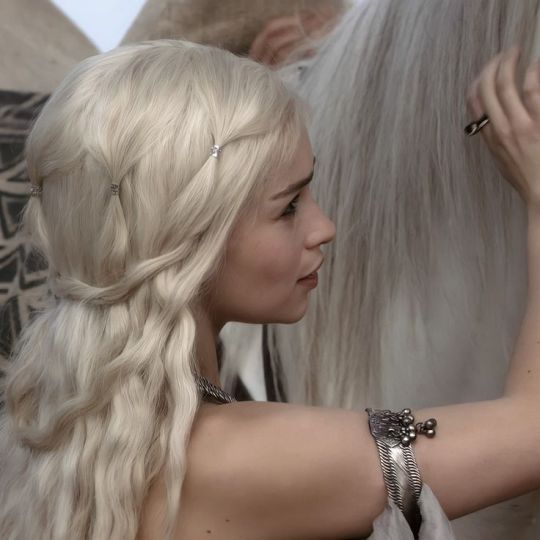
╴𝖨 𝗐𝗂𝗅𝗅 𝖺𝗇𝗌𝗐𝖾𝗋 𝗶𝗻𝗷𝘂𝘀𝘁𝗶𝗰𝗲 𝗐𝗂𝗍𝗁 𝗷𝘂𝘀𝘁𝗶𝗰𝗲. ◟気;
𝗱𝗼𝗻’𝘁 𝗰𝗹𝗮𝗶𝗺 it as yours.
𝗹𝗶𝗸𝗲 𝗼𝗿 𝗿𝗲𝗯𝗹𝗼𝗴 if you save.
#house targaryen#house of the dragon#aesthetic#moodboard#house targaryen aesthetic#house targaryen moodboard#got#game of thrones#game of thrones aesthetic#game of thrones moodboard#daenerys targaryen#daenerys stormborn#hbo#beige moodboard#beige aesthetic#daenerys details#daenerys appreciation#queen daenerys#george r r martin#emilia clarke#dragons#queen of meereen#a song of ice and fire#drogon#khaleesi#viserion#rhaegal#seven kingdoms#iron throne#deadthncool
83 notes
·
View notes
Text
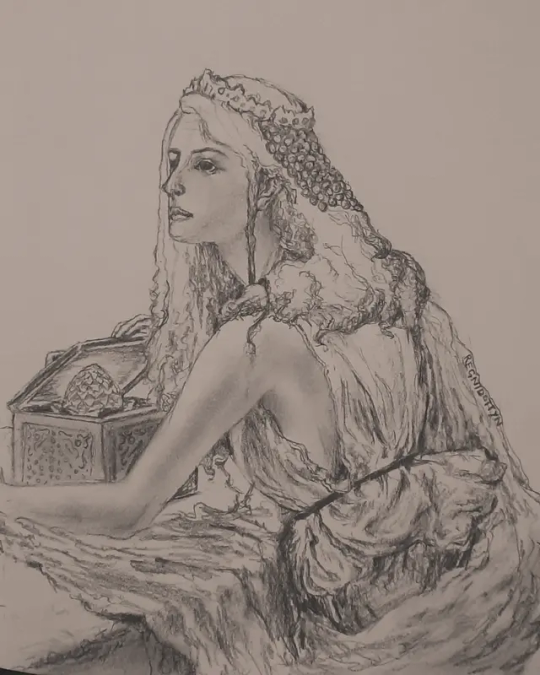
Daenerys unleashing fire made flesh upon her whole world, forever changing history sure sounds similar to how Pandora opened her labyrinth and unleashed evil.
#daenerys targaryen#asoiaf fanart#sketch#game of thrones fanart#greek mythology#pandora#artists on tumblr#artwork#traditional drawing#traditional art#dragon egg is my favourite detail in this#house targaryen#house of the dragon#austyrinne
197 notes
·
View notes
Text

dany has freckles from her frequent sunburns while in the red waste its canon bc i said so
#i love adding new design details to her#she’s my little dress up doll#dany#daenerys targaryen#queen daenerys#daenerys stormborn#asoiafblr#asoiaf art#asoiaf#asoiaf fanart#a song of ice and fire#wip#art wip#current wip
54 notes
·
View notes
Text
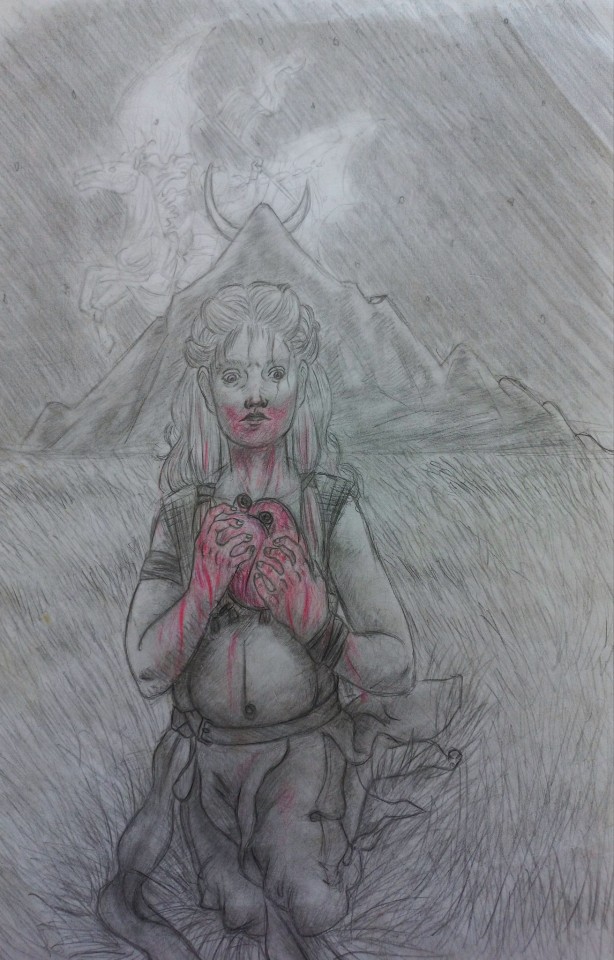
I made this last year while trying to figure out how to shade. I had picked 3 chapters to sketch something about them, either a scene or something else, and for Dany V AGOT, I couldn't, for the sake of me, bring myself to do something I was satisfied with, so I decided to do something more on the "mystical" side of things and this was the result
#Daenerys targaryen#asoiaf#fanart#my art#valyrianscrolls#house targaryen#AGOT#This was sort of a failed lesson as to learn how to shade you need to work with shapes first#as I sadly came to understand#anyway the next chapter will be Sansa VII ACOK with some SanSan#anyway not my best work but I do like the detail on the sky
133 notes
·
View notes
Text
I have a few jumbled thoughts about the ending of the Long Night, especially as it would relate to the whole idea of “the dragon has three heads”. The Long Night represents a disruption in a larger, cyclical framework—a period where imbalance overtakes the natural order. And within this context, I see each ‘head’ of the three-headed dragon as uniquely responsible for restoring balance and bringing the world back into harmony. Each ‘head’ embodies a distinct facet of restoring balance to the world, yet they work together, either in tandem or sequentially, to set things right once more. So I’ve been trying to tie together some thoughts I have regarding what each being in this triumvirate is uniquely suited to do. Because I personally don’t think any one person will be responsible for being the hero, as that just seems so antithetical to this series; and I also think the Long Night is just way too multifaceted to be ended by a singular action or person.
This is what we know about the Long Night:
“Oh, my sweet summer child,” Old Nan said quietly, “what do you know of fear? Fear is for the winter, my little lord, when the snows fall a hundred feet deep and the ice wind comes howling out of the north.Fear is for the long night, when the sun hides its face for years at a time, and little children are born and live and die all in darkness while the direwolves grow gaunt and hungry, and the white walkers move through the woods.” “You mean the Others,” Bran said querulously. “The Others,” Old Nan agreed. “Thousands and thousands of years ago, a winter fell that was cold and hard and endless beyond all memory of man. There came a night that lasted a generation, and kings shivered and died in their castles even as the swineherds in their hovels. Women smothered their children rather than see them starve, and cried, and felt their tears freeze on their cheeks.” Her voice and her needles fell silent, and she glanced up at Bran with pale, filmy eyes and asked, “So, child. This is the sort of story you like?” “Well,” Bran said reluctantly, “yes, only …” Old Nan nodded. “In that darkness, the Others came for the first time,” she said as her needles went click click click. “They were cold things, dead things, that hated iron and fire and the touch of the sun, and every creature with hot blood in its veins. They swept over holdfasts and cities and kingdoms, felled heroes and armies by the score, riding their pale dead horses and leading hosts of the slain. All the swords of men could not stay their advance, and even maidens and suckling babes found no pity in them. They hunted the maids through frozen forests, and fed their dead servants on the flesh of human children.” (Bran IV, AGoT)
We focus so heavily on the Others—understandably so—that we often overlook some crucial details. The Others don’t exist in isolation. They arrive in the wake of an extreme winter, which enables their existence for they are “demons made of snow and ice and cold” (Samwell V, ASoS). And with the sun and its heat gone, they move within the darkness. So confronting the Others in battle, in and of itself, does not end the Long Night. The true struggle lies in addressing the elements that allow them to exist in the first place. To fully defeat the Others, our heroes must first restore light and the balance of the seasons.
No single character in this series has the ability to achieve this on their own. Even the key magical protagonists are only equipped to address certain aspects of the conflict. That’s why the dragon must have three heads, each embodying a crucial responsibility: one to restore the natural cycle and end the long winter, another uniquely positioned as the antithesis to the Others, and a third tasked with confronting darkness by bringing light back into the world.
By now, you can see where I’m heading with this, right? I believe the three heads are Bran, who represents summer and stands as the antithesis to winter; Daenerys, whose dragons are the direct counter to the Others; and Jon, who occupies a more complex role as both the one who harnesses light and embodies it. Beyond this, each of these characters has been positioned as a chosen one, with distinct yet mirrored magical destinies that set them apart from the other POV characters.
I’m reminded of a quote from Arya’s POV in Dance:
One time, the girl remembered, the Sailor’s Wife had walked her rounds with her and told her tales of the city’s stranger gods. “That is the house of the Great Shepherd. Three-headed Trios has that tower with three turrets. The first head devours the dying, and the reborn emerge from the third. I don’t know what the middle head’s supposed to do….”
While I have more detailed thoughts on this passage, for now, I believe Daenerys represents the first head, Bran the third, and Jon the middle. Each head is tasked with a unique responsibility—one that is specific to them, that the others cannot fulfill. To end the Long Night, the three heads work together, but each plays a distinct part. There is some overlap, particularly with the middle head, who might serve as the balance between the extremes, yet each figure is positioned to occupy a particular space within this framework.
So I want to lay my thoughts here and see if we can get some wider discussion 👀
The first aspect of the Long Night - and perhaps the most important if we’re thinking of what makes it happen in the first place - is the long winter that precedes it.
Bran looked down. There was nothing below him now but snow and cold and death, a frozen wasteland… (Bran III, AGoT)
This winter provides the very elements that sustain the Others: snow and ice. It’s this aspect that I believe extends humanity’s struggle during the Long Night. With an almost endless supply of ice and snow, can our heroes truly defeat the Others through direct combat alone? I really don’t think so. The abundance of snow, accompanied by a persistent cold, suggests that new Others can continuously be ‘created’. While this is largely speculative given how little we know about them, I find it compelling that the Others seem to materialize out of the darkness itself (see Prologue, AGoT). And when Sam kills the Other in Storm, it simply dissolves…
Sam rolled onto his side, eyes wide as the Other shrank and puddled, dissolving away. In twenty heartbeats its flesh was gone, swirling away in a fine white mist. Beneath were bones like milkglass, pale and shiny, and they were melting too.
And that might not mean much in and of itself, but I’m inclined to think of the ADWD prologue:
The white world turned and fell away. For a moment it was as if he were inside the weirwood, gazing out through carved red eyes as a dying man twitched feebly on the ground and a madwoman danced blind and bloody underneath the moon, weeping red tears and ripping at her clothes. Then both were gone and he was rising, melting, his spirit borne on some cold wind. He was in the snow and in the clouds, he was a sparrow, a squirrel, an oak. A horned owl flew silently between his trees, hunting a hare; Varamyr was inside the owl, inside the hare, inside the trees. Deep below the frozen ground, earthworms burrowed blindly in the dark, and he was them as well. I am the wood, and everything that’s in it, he thought, exulting. A hundred ravens took to the air, cawing as they felt him pass. A great elk trumpeted, unsettling the children clinging to his back. A sleeping direwolf raised his head to snarl at empty air.
The Other and the human skinchanger dissolving after “death” is so fascinating. And it raises many questions. Death wasn’t the end for Varamyr as his spirit went into his wolf. So is that the same with the Other who also dissolved into white air? As long as magic and suitable conditions (i.e., winter and all its elements) exist, then the Others can never truly die and thus could take on another form?
If that’s the case, then winter itself must be addressed to cut off the Others’ vital resources—along with the magic that sustains them, though we’ll get to that later. And who better to combat winter if not Bran Stark of “Winter-fell”?
Now you know, the crow whispered as it sat on his shoulder. Now you know why you must live. “Why?” Bran said, not understanding, falling, falling. Because winter is coming. […] Bran touched his forehead, between his eyes. The place where the crow had pecked him was still burning, but there was nothing there, no blood, no wound. He felt weak and dizzy. He tried to get out of bed, but nothing happened. And then there was movement beside the bed, and something landed lightly on his legs. He felt nothing. A pair of yellow eyes looked into his own, shining like the sun. The window was open and it was cold in the room, but the warmth that came off the wolf enfolded him like a hot bath. His pup, Bran realized … or was it? He was so big now. He reached out to pet him, his hand trembling like a leaf. When his brother Robb burst into the room, breathless from his dash up the tower steps, the direwolf was licking Bran’s face. Bran looked up calmly. “His name is Summer,” he said.
Bran’s wolf, a reflection of his own identity, only receives his name after Bran glimpses his magical destiny. With winter’s horrors looming, Bran must become the summer that rises to challenge it.
As the Prince of Winterfell, Bran’s title and inheritance—rooted in the Stark legacy from the first Long Night and Bran the Builder—signify a dominance over winter. He is the summer prince, heir to the place where “winter fell, defeated”.
“And who is Summer?” Jojen prompted. “My direwolf.” He smiled. “Prince of the green.”
Prince. The man-sound came into his head suddenly, yet he could feel the rightness of it. Prince of the green, prince of the wolfswood. He was strong and swift and fierce, and all that lived in the good green world went in fear of him. (Bran I, ASoS)
Because winter brings death to the land, summer is needed to restore warmth, vitality, and breathe life back into the world. And that’s why Bran’s identity not just as the “prince of the green”, but as the last of the greenseers (of course once Bloodraven kicks the bucket) puts him in a unique position during the Long Night.
He will be the one to end the winter.
I’m still piecing together what this might ultimately look like, as we need more information about greenseeing and how Bran may fully harness it. However, from what we do know, it seems greenseeing is extends to earth magic—shaping and manipulating the natural world, as seen with events like the Hammer of the Waters. Additionally, greenseers can perceive past, present, and future, which essentially aligns with the passage of time. And isn’t that what the cyclical nature of the seasons embodies? Time flows, and with it come physical changes in the land: winter brings barrenness, spring rebirth, and summer growth. Humanity needs someone who understands this cycle and possesses the power to influence the earth itself.
Since Bran has already glimpsed the heart of winter, it’s possible he will find himself returning there, perhaps retracing the steps of the last hero. Additionally, the Isle of Faces and the God’s Eye, rich with weirwoods and sacred significance, seem like fitting locations for him to play a pivotal role in restoring balance; especially when we consider his role as a Fisher King/Grail figure who is linked with the renewal of once barren land. Whether Bran has to dig deep into the earth’s roots or manipulate the flow of time itself, the Long Night cannot end without his dominance over winter.
However, while restoring the balance of the seasons is crucial, neutralizing the immediate threat posed by the Others and their thralls is extremely important- and that’s where Dany comes in!
That night she dreamt that she was Rhaegar, riding to the Trident. But she was mounted on a dragon, not a horse. When she saw the Usurper’s rebel host across the river they were armored all in ice, but she bathed them in dragonfire and they melted away like dew and turned the Trident into a torrent. Some small part of her knew that she was dreaming, but another part exulted. This is how it was meant to be. (Dany III, ASoS)
I’ve argued before that, of our three chosen ones, Dany is the best suited to take on the role of military commander—and I don’t think that’s a far-fetched claim. She has one of the cleanest and most impressive military records in the main series, proving herself a formidable tactician. Not to mention, she commands the dragons—living embodiments of fire—who have been positioned as the direct counter to the Others, creatures of ice. While the Others bring cold and death, Dany and her dragons are fire made flesh, a force of life and renewal.
There are other narrative arguments for why Dany’s role is going to be so heavily militaristic.
Until one day Prince Rhaegar found something in his scrolls that changed him. No one knows what it might have been, only that the boy suddenly appeared early one morning in the yard as the knights were donning their steel. He walked up to Ser Willem Darry, the master-at-arms, and said, ‘I will require sword and armor. It seems I must be a warrior.’” (Dany I, ASoS)
“No one ever looked for a girl,” he said. “It was a prince that was promised, not a princess. Rhaegar, I thought … the smoke was from the fire that devoured Summerhall on the day of his birth, the salt from the tears shed for those who died. He shared my belief when he was young, but later he became persuaded that it was his own son who fulfilled the prophecy, for a comet had been seen above King’s Landing on the night Aegon was conceived, and Rhaegar was certain the bleeding star had to be a comet. What fools we were, who thought ourselves so wise! The error crept in from the translation. Dragons are neither male nor female, Barth saw the truth of that, but now one and now the other, as changeable as flame. The language misled us all for a thousand years. Daenerys is the one, born amidst salt and smoke. The dragons prove it.” (Samwell IV, AFFC)
“Azor Ahai, beloved of R’hllor! The Warrior of Light, the Son of Fire! Come forth […]” (Davos I, ACoK)
Azor Ahai is said to be a warrior, and while Dany doesn’t fit the traditional image of what that means, she is still an active participant in warfare. Moreover, one of the central aspects of her character is her role as an agent of freedom:
“…this Mother of Dragons, this Breaker of Chains, is above all a rescuer.” (Tyrion VI, ADWD)
She has spent much of her arc directly combating slavery which might seem unrelated, but the Others come with their own type of bondage in their creations of undead. The slavery of the Others is not just physical, but spiritual, and Dany’s role in battling them aligns with her fight for freedom. She isn’t suited to combat winter itself, as Bran is, but her strength lies in physical battle, which Bran is not. To put it another way: if Bran is Frodo journeying into the depths of Mordor, Dany is Aragorn, turning Sauron’s eye with her dragons and leading the fight to defeat his armies.
But I don’t think her role ends there.
The Others are not dead. They are strange, beautiful… think, oh… the Sidhe made of ice, something like that… a different sort of life… inhuman, elegant, dangerous. SSM
I’ve already mentioned that beyond the elements of winter—snow, ice, and cold—the Others are sustained by magic. Building on the idea of the Other dissolving into mist, it’s possible that magic is what binds these beings together: magic fuses a consciousness with snow and ice into a corporeal entity. So, in addition to battling them physically, our heroes—and Dany in particular—may have to confront this magic that gives the Others their form and power.
“Half a year gone, that man could scarcely wake fire from dragonglass. He had some small skill with powders and wildfire, sufficient to entrance a crowd while his cutpurses did their work. He could walk across hot coals and make burning roses bloom in the air, but he could no more aspire to climb the fiery ladder than a common fisherman could hope to catch a kraken in his nets.” Dany looked uneasily at where the ladder had stood. Even the smoke was gone now, and the crowd was breaking up, each man going about his business. In a moment more than a few would find their purses flat and empty. “And now?” “And now his powers grow, Khaleesi. And you are the cause of it.” “Me?” She laughed. “How could that be?” The woman stepped closer and lay two fingers on Dany’s wrist. “You are the Mother of Dragons, are you not?” (Dany III, ACoK)
The birth of Dany’s dragons seems to have strengthened fire magic, tying her deeply to the very fabric of magic itself. The AGoT bookend suggests that the Others’ ice magic and the dragons’ fire magic may be connected, part of a larger magical ecosystem, or perhaps opposing forces that coexist on opposite ends of the spectrum. Ice and fire, death and life—both seem bound by the same mystical forces. Given Dany’s connection to magic and the fact that the reemergence of her dragons parallels the resurgence of the Others, she seems best suited to combat the magic that enables the Others to take form—serving as an inverse to her bringing dragons to life. And this underscores her dual role as both a destroyer and creator of life
The specifics on Dany’s confrontation with the Others and the magic that creates them remains unclear. She could venture to the heart of winter/the Lands of Always Winter and face the source of their power, creating narrative symmetry between the dragons of the Lands of the Long Summer and the creatures from the Lands of Always Winter. Alternatively, she might find herself in the Isle of Faces if her dream of fighting the Others at the Trident is fulfilled literally. The Isle, with its rich magical ecosystem, would be a fitting place for such a climax.
Bran, too, seems destined to go to the Isle of Faces (I’m a firm ‘Bran, King at the Gods Eye’ truther). This could be where their paths cross and their roles intersect. Bran, with his deep connection to nature and time, might provide Dany with guidance on how to engage with magic and influence its effects on the world. With Bran’s knowledge and Dany’s firepower, she could then deliver the final blow. While much of this remains speculative, what is clear is that their roles complement each other.
And that leaves Jon, the “light bringer”.
They said the words together, as the last light faded in the west and grey day became black night. “Hear my words, and bear witness to my vow,” they recited, their voices filling the twilit grove. “Night gathers, and now my watch begins. It shall not end until my death. I shall take no wife, hold no lands, father no children. I shall wear no crowns and win no glory. I shall live and die at my post. I am the sword in the darkness. I am the watcher on the walls. I am the fire that burns against the cold, the light that brings the dawn, the horn that wakes the sleepers, the shield that guards the realms of men. I pledge my life and honor to the Night’s Watch, for this night and all the nights to come.” (Jon VI, AGoT)
It’s important to see Jon’s primary function as an extension of his current role. He is a man who watches for the night—a sentinel standing against the encroaching darkness. This role is deeply embedded in his identity, and it’s fascinating to see how it manifests in his prophetic dreams.
It’s black inside, and I can see the steps spiraling down. Somehow I know I have to go down there, but I don't want to. I'm afraid of what might be waiting for me. The old Kings of Winter are down there, sitting on their thrones with stone wolves at their feet and iron swords across their laps, but it's not them I'm afraid of. I scream that I'm not a Stark, that this isn't my place, but it's no good, I have to go anyway, so I start down, feeling the walls as I descend, with no torch to light the way. It gets darker and darker, until I want to scream." He stopped, frowning, embarrassed. "That's when I always wake." (Jon IV,AGoT)
Last night he had dreamed the Winterfell dream again. He was wandering the empty castle, searching for his father, descending into the crypts. Only this time the dream had gone further than before. In the dark he'd heard the scrape of stone on stone. When he turned he saw that the vaults were opening, one after the other. As the dead kings came stumbling from their cold black graves, Jon had woken in pitch-dark, his heart hammering. (Jon VII, AGoT)
The Winterfell crypt dreams contain many intriguing elements, but I’ll focus primarily on two key motifs: death and darkness.
Jon is the most natural fit for the middle head of the dragon because he exists at the intersection of extremes: light and darkness, destruction and renewal, death and life.
When the spirit stepped out of the open tomb, pale white and moaning for blood, Sansa ran shrieking for the stairs, and Bran wrapped himself around Robb’s leg, sobbing. Arya stood her ground and gave the spirit a punch. It was only Jon, covered with flour. “You stupid,” she told him, “you scared the baby,” but Jon and Robb just laughed and laughed, and pretty soon Bran and Arya were laughing too. (Arya IV, AGoT)
While Bran is connected to summer and warmth through his magical familiar, Jon possesses a unique sensitivity to death, embodied by his bond with Ghost.
He sniffed at the bark, smelled wolf and tree and boy, but behind that there were other scents, the rich brown smell of warm earth and the hard grey smell of stone and something else, something terrible. Death, he knew. He was smelling death. He cringed back, his hair bristling, and bared his fangs. Don't be afraid, I like it in the dark. No one can see you, but you can see them. But first you have to open your eyes. See? Like this. And the tree reached down and touched him. (Jon VII, ACoK)
Furthermore, Jon’s fate at the end of ADWD implies that through his death and eventual rebirth, he becomes a ghost in his own right—caught between life and death, existing yet not fully alive. This intertwines with his connection to darkness, as Jon straddles the boundary between light and darkness: a shadow.
All in black, he was a shadow among shadows, dark of hair, long of face, grey of eye. (Jon VII, ACoK)
“I can show you.” Melisandre draped one slender arm over Ghost, and the direwolf licked her face. “The Lord of Light in his wisdom made us male and female, two parts of a greater whole. In our joining there is power. Power to make life. Power to make light. Power to cast shadows.” “Shadows.” The world seemed darker when he said it. “Every man who walks the earth casts a shadow on the world. Some are thin and weak, others long and dark. You should look behind you, Lord Snow. The moon has kissed you and etched your shadow upon the ice twenty feet tall.” Jon glanced over his shoulder. The shadow was there, just as she had said, etched in moonlight against the Wall. (Jon VI, ADWD)
Shadows, like ghosts, are echoes of something once tangible. They arise from obstructed light, existing in a realm that is neither completely dark nor wholly bright, hovering between presence and absence. They highlight where light is absent. But shadows also exist only in the presence of light, revealing the delicate boundary between illumination and the lack thereof.
So building on that idea, it’s significant that Jon’s frequent journeys into the Stark underworld, where death and darkness prevail, take a pivotal turn in ASoS when he becomes vividly aware of light fading in real time.
He dreamt he was back in Winterfell, limping past the stone kings on their thrones. Their grey granite eyes turned to follow him as he passed, and their grey granite fingers tightened on the hilts of the rusted swords upon their laps. You are no Stark, he could hear them mutter, in heavy granite voices. There is no place for you here. Go away. He walked deeper into the darkness. "Father?" he called. "Bran? Rickon?" No one answered. A chill wind was blowing on his neck. "Uncle?" he called. "Uncle Benjen? Father? Please, Father, help me." Up above he heard drums. They are feasting in the Great Hall, but I am not welcome there. I am no Stark, and this is not my place. His crutch slipped and he fell to his knees. The crypts were growing darker. A light has gone out somewhere. "Ygritte?" he whispered. "Forgive me. Please." But it was only a direwolf, grey and ghastly, spotted with blood, his golden eyes shining sadly through the dark…
This is particularly noteworthy because of a similar, parallel dreams:
That night he dreamed of the feast Ned Stark had thrown when King Robert came to Winterfell. The hall rang with music and laughter, though the cold winds were rising outside. At first it was all wine and roast meat, and Theon was making japes and eyeing the serving girls and having himself a fine time . . . until he noticed that the room was growing darker. The music did not seem so jolly then; he heard discords and strange silences, and notes that hung in the air bleeding. Suddenly the wine turned bitter in his mouth, and when he looked up from his cup he saw that he was dining with the dead. (Theon V, ACoK)
The fires that ran along the blade were guttering out, and Jaime remembered what Cersei had said. No. Terror closed a hand about his throat. Then his sword went dark, and only Brienne’s burned, as the ghosts came rushing in. (Jaime VI, ASoS)
The ASoS crypt dream runs parallel to Theon’s ACoK dream and Jaime’s ASoS dream, with a common element: the presence of death and growing darkness.
While the crypts are inherently dark, Jon perceives when other sources of light are extinguished—true to his role in the Night’s Watch, which is to keep vigil against encroaching darkness. This ability to sense the fading light underscores his ghostly nature, where he reflects light while simultaneously existing in a state of absence. It also highlights his role as a shadow, existing in the blending of light and darkness. As both a shadow and a ghost, he can navigate these dual states, acting within the world’s transitions between day and night.
Which brings us to what I consider a continuation of Jon VII; while that chapter is marked by a lack of light, this next chapter is characterized by an abundance of it:
Burning shafts hissed upward, trailing tongues of fire. Scarecrow brothers tumbled down, black cloaks ablaze. ‘Snow,’ an eagle cried, as foemen scuttled up the ice like spiders. Jon was armored in black ice, but his blade burned red in his fist. As the dead men reached the top of the Wall, he sent them down to die again. He slew a greybeard, a beardless boy, a giant, a gaunt man with filed teeth, and a girl with thick red hair. Too late he recognized Ygritte. She was gone as quick as she’d appeared. The world dissolved into a red mist. (Jon XII, ADWD)
At some point between these two dreams, Jon found (or even created) light and he wields it as a weapon. And it’s clear that Jon’s sword in this dream is the actual manifestation Azor Ahai’s Lightbringer:
“In ancient books of Asshai it is written that there will come a day after a long summer when the stars bleed and the cold breath of darkness falls heavy on the world. In this dread hour, a warrior shall draw from the fire a burning sword. And that sword shall be Lightbringer, the Red Sword of Heroes, and he who clasps it shall be Azor Ahai come again, and the darkness shall flee before him.” (Davos I, ACoK)
Lightbringer has two major requirements: to give off heat and to illuminate. Jon’s sword does both!
We’ve seen a number Lightbringer-esque weapons (e.g., Beric’s and Thoros’), but Stannis Baratheon’s sword is the most intriguing proxy.
Davos knelt, and Stannis drew his longsword. Lightbringer, Melisandre had named it; the red sword of heroes, drawn from the fires where the seven gods were consumed. The room seemed to grow brighter as the blade slid from its scabbard. The steel had a glow to it; now orange, now yellow, now red. The air shimmered around it, and no jewel had ever sparkled so brilliantly. But when Stannis touched it to Davos’s shoulder, it felt no different than any other longsword. “Ser Davos of House Seaworth,” the king said, “are you my true and honest liege man, now and forever?” (Davos IV, ASoS)
While Stannis’ sword is visually dazzling, it is, in essence, a well-made fake. Its bright glow meets one of the two requirements for “light-bringer”, yet its impressive variety of hues with no actual heat serve as a clue that it is not the true sword of heroes. When the world cloaked in darkness, a weapon that shines as brightly as the sun is undoubtedly a powerful symbol. And Stannis’ sword is bright….
….but it’s almost too bright. His sword emits the wrong kind of light—one that is all glamor with little substance. This great conflict is referred to as the “war for the dawn”. So what humanity needs is a reminder of the dawn itself:
As a red dawn broke in the east, Grey Wind began to howl again. (Catelyn X, AGoT)
A swollen red sun hung low against the western hills when the gates of the castle opened. (Catelyn IX, AGoT)
Dawn and the sun are often associated with red hues in the text, a color heavily tied to fire (e.g., House Targaryen and R’hllor). Stannis’ sword gives off light, but it lacks the essence of true warmth. In contrast, Jon’s sword is the real Lightbringer: it is hot enough to burn against the cold and it radiates the actual red hues of dawn, thus illuminating the world around it.
Jon’s role as the archetypal fantasy protagonist necessitates a magic sword—Lightbringer will be his Excalibur; his Anduril. But more than just being a weapon, his Lightbringer symbolizes the transition from darkness to light. Dawn, a moment of transformation, begins with deep red hues that retain the shadows of night before blooming into the full brightness of the sun. Like the early dawn, Jon straddles the line between night and day, existing between life and death, darkness and light. As the middle dragon head, he embodies balance.
I’m not really sure how that plays out in the endgame; hell, I still can’t figure out how Jon will “forge” Lightbringer in the first place. But he has to end up somewhere for his arc to reach its magical climax. I’ve speculated that Bran and Dany might find themselves at the Isle of Faces or the heart of winter. The latter is a strong possibility for Jon, especially if he too recreates the last hero’s journey; not to mention his connections to snow and winter. But he could also return to the Wall, a mighty structure that symbolizes the boundary between life and death. The Wall is also imbued with ancient magic that radiates outward (e.g., strengthening Mel’s magic and prolonging Maester Aemon’s life). Therefore, it could serve as the ideal location for Jon to reignite and wield the light that has long been hidden.
Though Bran, Jon, and Dany each have distinct roles in restoring balance, their actions are deeply intertwined, with shared themes across their arcs. Jon and Bran connect through their existence in darkness, as seen in their ACoK dreams. All three share connections to death: Bran inhabits the realm of the dead (Mel I, ADWD; Jon’s ACoK wolfdream), Jon embodies a ghost-like nature that straddles life and death, and Dany is called the “bride of fire, daughter of death”. Additionally, Jon and Bran are linked to winter, and both Jon and Dany share the legacy of Azor Ahai and Lightbringer, with dragon breath also echoing the red hues of dawn. Together, they are not just separate forces but three heads of the same dragon, working in concert to ensure that the Long Night ends and the cycle of life and death continues.
TL;DR:
The dragon has three heads, each with a unique role in maintaining the cycle of balance, despite their overlaps in common themes. Bran, the Prince of Winterfell, embodies summer and inherits the legacy of the kings of winter, making him the most suited to confront the Long Night’s origin: winter itself. The Long Night cannot end without Bran’s triumph, as winter represents death while summer signifies new life. Dany, linked to the ebb and flow of magic and the direct antithesis of the Others, is best positioned to engage them in battle and counteract the ice magic that enables their existence. As the perfect manifestation of fire magic, she serves as a powerful weapon, embodying the theme of destruction by being “breaker of chains”. Meanwhile, Jon straddles the boundaries of light and dark, life and death, destruction and creation. His unique position allows him to navigate these extremes, bringing forth the lost light while holding back the consuming darkness. As the embodiment of balance—dead yet alive, icy yet fiery—he ensures the proper equilibrium between these forces.
Dragons, symbols of life, fire, and summer, starkly contrast with the cold death represented by winter and its children. Daenerys, as the Mother of Dragons, embodies the nurturing aspect of life, actively bringing forth new existence by counteracting suspended states of life (e.g., awakening dragon eggs and freeing slaves). Bran, representing youthful vitality, symbolizes young life that is both born and maturing. Jon occupies a unique position in the middle; he is like spring, a new life emerging from darkness, akin to an awakened dragon—life once petrified but now revitalized. Together, these three form a multifaceted dragon that embodies various dimensions of life, each contributing uniquely to the fight against the Long Night.
#yikesssssss this might be the longest post I’ve ever written shajsbsjbshs#have a lot of thoughts so I hope this all made sense despite the length#but I’ve been wanting to write a more detailed post on thematic meaning of ’the dragon has three heads’#asoiaf#valyrianscrolls#jon snow#bran stark#daenerys targaryen#three heads of the dragon#the long night#the others#random speculations
49 notes
·
View notes
Text
Working on some book 1 designs & that includes Irri & Jhiqui and I'm reminded of what a shame it is they're not more developped in the books unless GRRM has some plans for them in the future cause it's clear there are interesting stuff that could go with Daenerys' arc and be more than background stuff - both of them seem to struggle with their status & are sometimes weirdly detached from Daenerys' goals & values - Irri has sex with Dany seemingly mainly out of duty, probably because she's been taught to give sexual pleasure to those who own her, and it's a fucked up mindset which could be a bigger point of tension in Dany's part of the book as it reflects on their relationships ; Jhiqui calls Missandei Daenerys' "slave" in book 5, suggesting Dany's openly anti-slavery policy is somehow going over her head, which means she might still see herself as her slave (probably same with Irri...). Again this implies that they're not as close as we think and that their relationship is a bit more formal & less cutesy than usually considered by the fandom. Their journey towards true freedom is happening in the background and they're not even halfway through it apparently.
#i do hope grrm didn't put these details there for absolutely nothing thought#daenerys targaryen#irri asoiaf#jhiqui#valyrianscrolls#asoiaf art#dothraki#a game of thrones
14 notes
·
View notes
Text
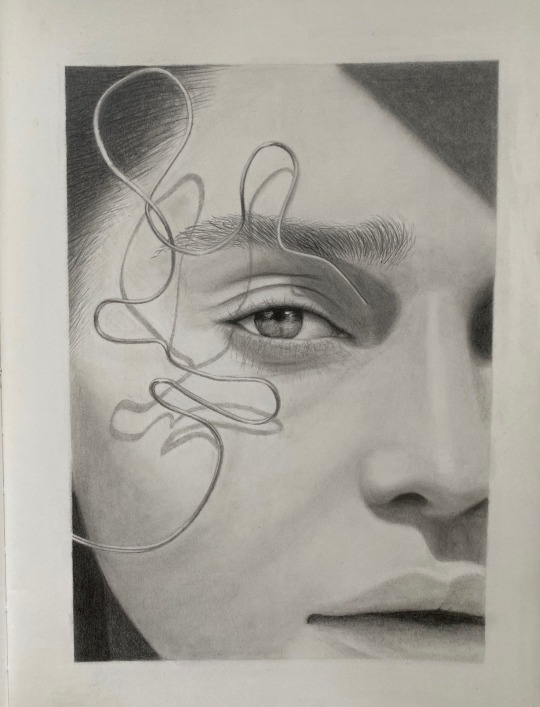
original art of emilia clarke
#art#artwork#original art#traditional art#artists on tumblr#art detail#my art#drawing#hand drawn#my draws#tumblr draw#hyperrealism#realism#realistic#celebrity art#sketch#sketchbook#pencil#drawn#drawdrawdraw#small artist#queer artist#emilia clarke#game of thrones#daenerys targaryen#house targaryen#game of thrones daenerys#queen daenerys#daenerys targeryan#actress
16 notes
·
View notes
Text

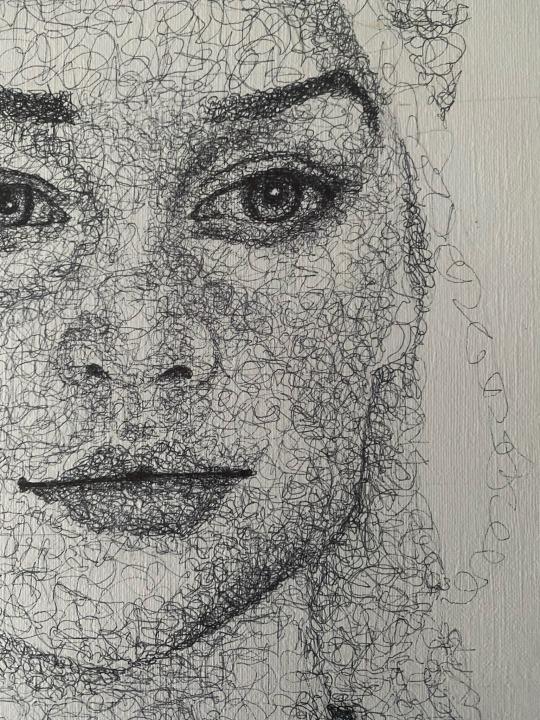

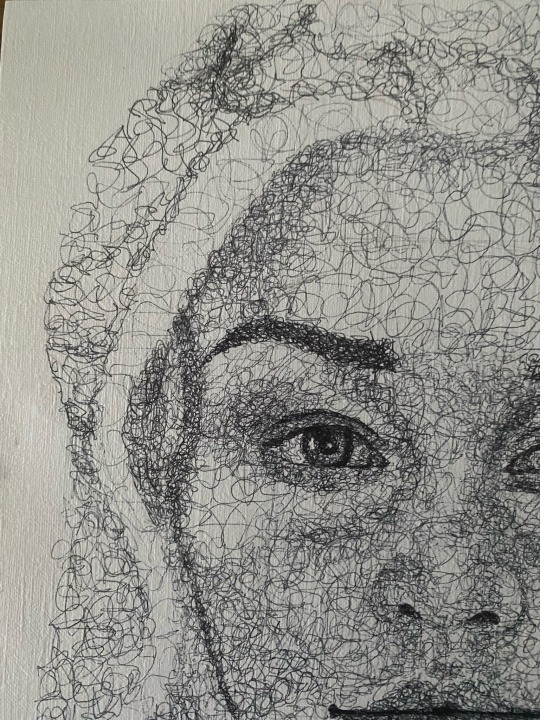
‘khaleesi’. details
#art#mine#art print#female artists#artists of tumblr#women artists#fan art#game of thrones#got#got fanart#daenerys targaryen#daenerys targaryen art#game of thrones art#khaleesi art#‘khaleesi’#art details#biro art#biro pen#ink art#line art#pen art
37 notes
·
View notes
Text
I've been sort of circling this point for a while now. But given how many remakes of public domain stories Hollywood has been putting out recently, I think it's kind of weird we haven't gotten any Animal Farm trailers yet.
Revolutions are hard, and ugly, and even if you win it's an uphill battle not repeating the mistakes of the previous regime. These are themes which are incredibly relevant right now, and yet most of the movies that have come out in the past 5 years discuss the overthrow of tyrants in very black-and-white terms, if at all.
I think what's important to keep in mind is that the farm WASN'T doomed from the start. That while the story has a downer ending, the idea that revolution is a crapshoot is a thought-terminating cliché and misunderstands the point of the book. There were times where it seemed like everything could have worked out for the better... then Snowball was chased off by Napoleon, and the focus shifted from citizen welfare to competing in the human economy, and a caste system began to reemerge. These were tangible missteps which give the reader a deeper appreciation for how hard it is to establish a true democracy. We study dystopias to think critically about or imaginings of utopia, not to simply bum ourselves out.
#animal farm#movies in 2024#leftism#anarchism#eat the rich#i haven't read the book since i was 11 if i got some details wrong don't at me#american cinema#second american civil war#mostly i just want more movies and tv about femmes in difficult leadership roles#elena vernham#this is why season 4 of Westworld was bad btw#Season 4 should have been about the robots trying to take the moral high ground over humanity and failing#and instead it was just a lot of faffing around that didn't matter#Season 8 of GOT too; they flanderized Daenerys into a crazy bitch#instead of just letting her idealism blow up in her face organically like it did in Season 4#and like I've said if we ever get a Devil's Carnival 3 it needs to be an animal farm homage#if nobody else will do it I guess this is just what Season 2 of Slippin Kimmy will have to be about#acton's axiom and the people who love it
6 notes
·
View notes
Text
[ID: Detailed fanart of Daenerys Targaryen from A Song of Ice and Fire. She is looking slightly off to the side, and is wearing a cream coloured sleeveless shirt with brown strips on the collar and shoulder ends. Over her stomach is darker cream colored wrap, with a gold ornament with little gold coins dangling on strings, and red and purple inlaid gems. Over her hips is a purple skirt tied with a gold ribbon. Over one of her shoulders is a red shawl with gold stripes, and she is also wearing a white dragon bracelet, a gold bracelet with purple inlaid gems, a gold armband with little gold coins dangling on strings, and a gold necklace with gold, purple, and red gems hanging from it.
Dany is wearing a gold crown with a swirling black design on the sides, as well as inlaid red and black gems. Hanging from the sides of the crown are two round charms, with a gold four-pointed star and red and black stones. The charms are hanging from gold strands, and they have little black stones hanging from them, that are also attached by gold strands. The front of the crown has three little dragon heads on it, one red, one black, and one white. She also has a gold nose ring in. Her hair is unbound and falls to just above her chest.
Behind Dany is her dragon Drogon. He is looking straight ahead, and has steam coming out of his nose and mouth. She has her hand on his chin. The background is light brown, with an arch on the top. On the two corners beside the arch are purple triangles with green plants and a white circle with red and pink designs in it. End ID]
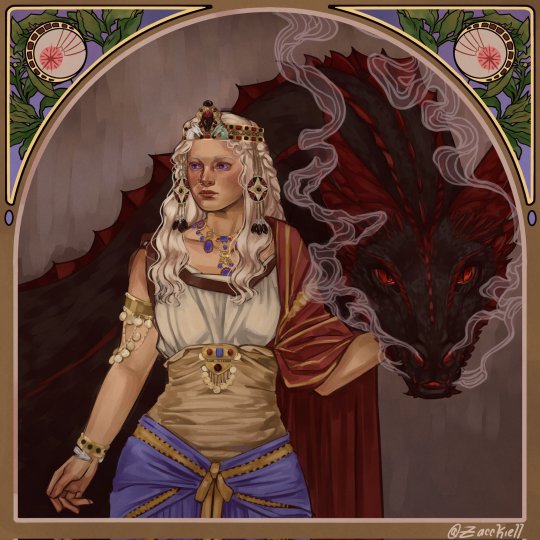

Daenerys by Zacckiell on Twitter. Here's the artist's ko-fi.
#daenerys targaryen#asoiaf#asoiaf art#described#hooooly fuck this is absolutely gorgeous!!!#all the little details!! her clothes!! the targaryen colors on her crown😍😍#hi dany love u girl!!
5K notes
·
View notes
Note
👗 for any scene for Yorick?
Finally facing the consequences of my actions with Yorick’s fits being made from composite parts, lol. I'll go with what he wore when he met his dragon/in chapter 5, because I don't talk about bb!Yorick & his child slays enough, & because I actually drew that fit in the (very outdated) reference sheet I made for him (& then I'll talk about the references too)

So that's baby!Yorick up on the Dragonmont about to get terrorized, lol. It's pretty basic, especially when compared to some of the super elaborate outfits he has as a teen & adult, but he's 10 & it's still a serve. Pay no attention to the fact I forgot to color his hair tie.


These were the main inspiration pictures for it. There's already a litte bit of at least acknowledging his Targaryen side with the personal heraldry he was using at the time (mostly because Ella suggested it, this was still his "dragons are scary" era), & I decided to lean into that a little bit & bring in some more dragon themeing outside of the dragon sigil because a big character change was about to happen.
The scalloped edging the the doublet shoulders/the trim for the arm holes reminded me of scales a little bit, so I brought that in along with actual scale patterning on the sleeves to kind of nod towards "he's gonna encounter his dragon & conquer his fears through sheer anger & determination (welcome back teen!Misa)." So there's some hinting there towards where we're gonna wind up with a lot of his future design elements & leaning more into the dragon thing once he's older because that is a very strong & important bond for him moving forward. Yes I know that I put a lot of thought into symbolic costuming moments for a non-visual medium where I often neglect to go into textual detail yo describe full outfits. Mind your business.
#asks#oc: yorick royce#its all either ''this fit would just be a slay so there's lots of intricate detail''#or ''sansa's 1st wedding dress/daenerys's costume journey level symbolism & motifs thought patterns'' for all sotf costumes#know this about me: i approach most things from a character design perspective#👗
10 notes
·
View notes
Note
Will you accept a mad dany arc if grrm does it in a different, more sensical way or would that always narratively suck for you?
it has nothing do with my personal feelings regarding the character. i dislike speculation of dany having a downfall arc because it reveals a misreading of the text and the narrative role she plays within it. i don't believe it can be done in a satisfying way because she was always intended to be a heroic character. the 'mad dany' reading relies on certain initial assumptions about her character that are being problematised within the story—which is difficult to discuss because grrm's intent regarding dany is at odds with the orientalist framework he employs in the construction of essos, but i'll try to be comprehensive about it. so dany is an exile, homeless and perpetually seeking a home. she was told by viserys that westeros is "our land" but she's not culturally westerosi the same way the rest of our cast is because she's also never known westeros. all she has are second hand, romanticised accounts from viserys (These places he talked of [...] they were just words to her). dany has lived her entire life in essos and absorbed their cultural norms and slavery is normalised in most of essos (There was no slavery in the free city of Pentos. Nonetheless, they were slaves), it's especially apparent in her first chapter which pointedly draws attention to the various slaves serving at illyrio's manse, something dany doesn't express any moral objection to, because nobody has taught her this is wrong. and that understanding only comes after viserys sells her to drogo and she personally experiences a similar loss of autonomy.
Do you know what it is like to be sold, squire? I do. My brother sold me to Khal Drogo for the promise of a golden crown. Well, Drogo crowned him in gold, though not as he had wished, and I . . . my sun-and-stars made a queen of me, but if he had been a different man, it might have been much otherwise. Do you think I have forgotten how it felt to be afraid? DAENERYS II, A Storm of Swords
and when mirri reveals to dany that her act of 'saving' her was no saving at all. rescuing her through the offer of a place in drogo's khalasar is a meaningless gesture since it does nothing to address the systems that have enabled mirri's enslavement in the first place. yeah, she's fourteen and possesses no power in her own right and is not complicit in drogo's crimes but mirri's presence in the story is meant to teach her that lesson. dany does not arrive already possessed with a political consciousness that opposes slavery, she learns and reorients her worldview just as jon did once he became familiar with the free folk. this is an important detail because without it her crusade in slaver's bay is no longer a story about a former enslaved and sexually abused girl being provided the means to begin a revolutionary counter-struggle against a culture of dehumanisation, but about a civilising mission where a culturally westerosi (westeros, where slavery is outlawed. westeros which is clearly imagined as the occident to essos's orient) character with superior ideals travels to foreign lands to educate the barbarians—which would've made her a straightforward white saviour figure. this IS undermined by the way her storyline is rife with orientalist tropes and i'm getting to that, but my main point is that dany's character is very deliberately written to be someone who is stateless and doesn't belong anywhere. she is an other. which is compounded by her targaryen heritage—the targaryens are narratively imagined as white enough to co-exist with the rest of westeros but they're also being othered because they're a family originating from the east with 'depraved' inbreeding and blood magic practices (practices that are reviled throughout the whole continent), which simultaneously makes them too other to ever fully assimilate despite the family being culturally westerosi in all the ways that matter. this especially comes through in the coin quote, every house has had occasional despots for rulers but people only bother to pathologise the targaryens and that's because they're foreigners. "the gods flip a coin" is presenting this dichotomy of targaryens as either mad - violent barbarians from the east, or great, in which case they're exoticised as otherworldly, above the laws of gods and men. and the final thing that serves to other her is her association with the dothraki. the dothraki are initially introduced as violent savages, but that view has been challenged since then as dany adopts dothraki customs and comes to love their people as her own and even sees herself as more of a khaleesi than a queen. and i must emphasise that this is no way done well because a) the dothraki are constructed out of offensive stereotypes about steppe cultures b) five books later grrm hasn't bothered to give any of them interiority because he clearly doesn't care about the dothraki, they're an afterthought in his narrative about dany and c) i think the subversion of their introduction as the inferior racial other basically amounts to "they're noble savages".
so you see all this at work when in-universe those who revile her speak of alleged violent tendencies, that she's coming to burn the continent down, that she hatched her dragons through foul blood magic and that she tricked her khal husband into murdering her brother and has acquired an army of savages, that her court is made up of foreigners and 'honourless' westerosi men (jorah, barristan, and soon tyrion), while others talk of her supposed otherworldly beauty ("The last of her line. They say she is the fairest woman in the world.")—the mad dany reading of her is taking all this at face value, it's falling for that in-universe narrative her enemies have come up with, which associates her and her allies' foreignness with moral depravity. (this is also what the show did, which i said "achieved her s8 ending by fully leaning into the horror of the savage oriental horde come to oppress the civilised westerosi landowning class" and that hysterical randyll tarly speech "at least cersei wasn't a FOREIGNER"). a very early example of this is in the first book. robert wanted a teenager dead because she was a targaryen: aerys's daughter, rhaegar's sister, because she married a khal and adopted dothraki customs as her own. and it was ned who put up a fight against this. ned is flawed in my ways but do you suppose the narrative will diminish ned's legacy in this, in his stance against dehumanisation. and asoiaf is primarily about that, every major character has had experience with being othered (cripples, bastards, and broken things is about this) and within this narrative dany is meant to be The Other who is working to end institutions of otherisation. her upcoming invasion of westeros is not playing into the the threat of the foreign invader but raising questions of whether westeros is also in need of some reform (at one point tyrion directly compares a serf to a slave, something that might be narratively painting westeros as not culturally superior at all for having outlawed slavery). the problem, of course, being that the way grrm subverts the image of essos as the inferior racial other is by first populating it with orientalist stereotypes. he parallels some of the violence found in ghiscari culture and the dothraki raid of the lhazareen village with ramsay and amory lorch and gregor clegane et al operating in the riverlands in acok but the ghiscari are also portrayed almost as a monolith, as uniformly morally suspect individuals because our only introduction to them is through the slavers. it's the way dany is the only active abolitionist with a narrative voice in essos (there's the shavepate. but he's also a scheming violent extremist so), i said her story is not a civilising mission but when you fail to give any of the ghiscari oppressed a voice it doesn't result in great optics. and it is undeniable that the story is About Westeros, dany's great narrative destiny lies over there, when the long night arrives—an apocalyptic threat meant to affect the entire world—the battle for the dawn will also take place over there, i doubt the essosi will play a role in that.
#re the dothraki i'll be honest if he couldn't manage to give them interiority in the 15 years between agot and adwd#why would he start now. like. i don't think we're getting anything in twow sorry#asoiaf#valyrianscrolls#dany#asks#*[🫀]
307 notes
·
View notes
Text
Yet another Daenerys outfit design, made to evoke her "Stormborn" name. And I'm giving her some tattoos again !
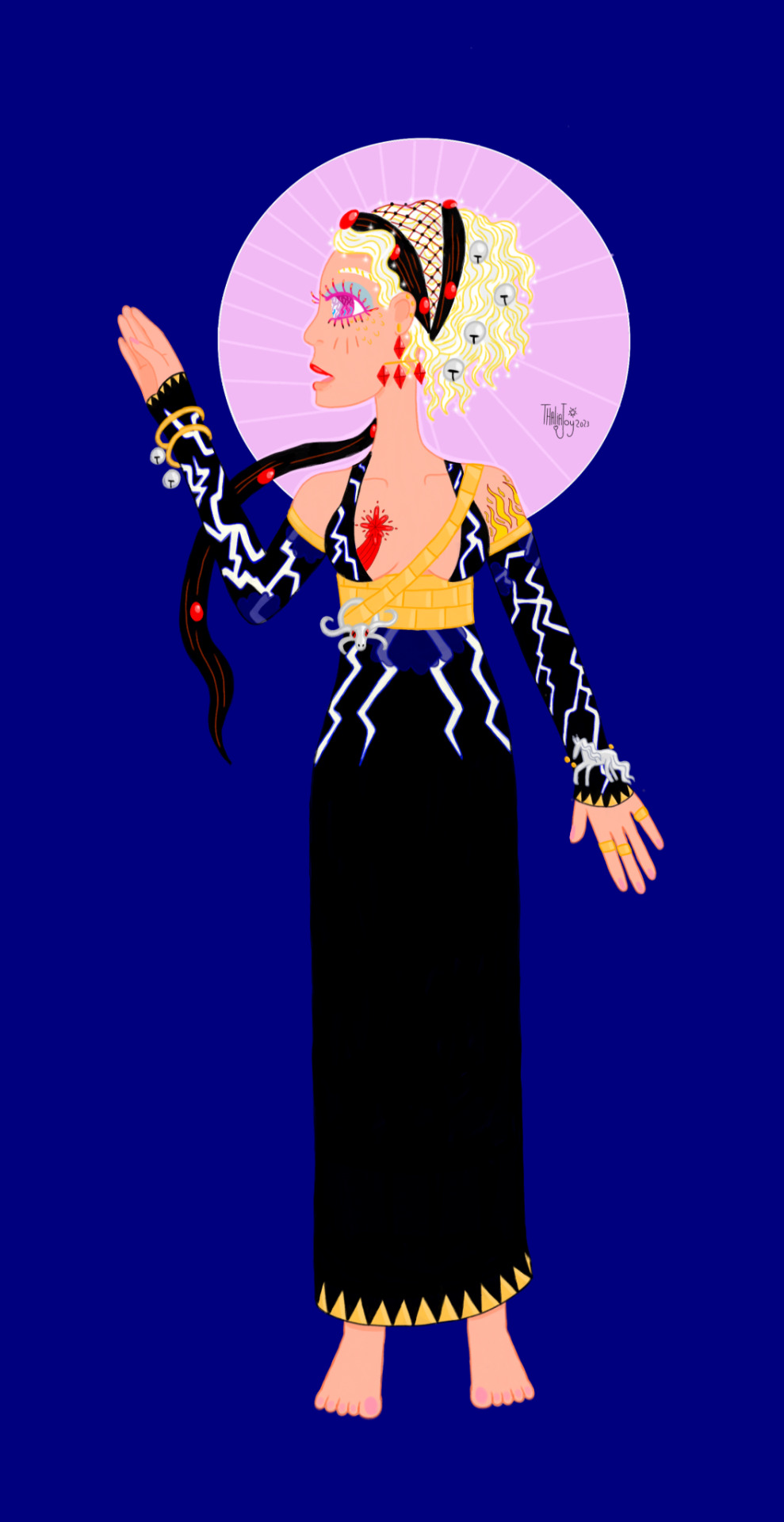
Originally made to be a pair with the Jon I drew like yesterday, as an ensemble piece.

#daenerys stormborn#egyptian daenerys#lightening dress ⚡#red star tattoo#love the little horse bracelet I gave her 🥰#valyrianscrolls#asoiaf art#i love designing dresses for her#little detail is the both of them having the star symbol on them#marked on their body itself
14 notes
·
View notes
Text
[ID: Fanart of A Song of Ice and Fire. Daenerys Targaryen is sitting on stone steps in front of the house with the red door in Braavos. On either side of the door are two stone pillars, overgrown with ivy. Dany is sitting with her elbows resting on her knees, with her chin resting on her closed hands. Her hair comes to just above her chin, and she is wearing pearl earrings, as well her crown, which is gold, inlaid with blue pearls on either side. The front of the crown has a three-headed dragon on it, in the colors of her dragons (cream, black and red, and green). On either side of the heads are two red rubies.
Daenerys is wearing blue-green cape embroidered in an intricate pattern, which hangs over both shoulders and comes down to the ground. Underneath the cape she's wearing a purple dress with a gold belt, as well as matching gold bracelets and arm bands. Drogon is sitting on her shoulders, with his tail curled around her neck. He has his wings unfurled, and is screeching up at the sky. End ID]

“All Daenerys wanted back was the big house with the red door, the lemon tree outside her window, the childhood she had never known.”
She is my favorite character from the books, I love her so much so I hope to have done a good job on this one
#daenerys targaryen#asoiaf#asoiaf art#this is gorgeous!!! i love that her crown has her dragons on it#and i love the details on her cape#described
2K notes
·
View notes
Text
the gender theme is very present in ASOIAF, especially comments on the oppression of women in a patriarchal society and the constricting gender roles present in the world GRRM crafted. many characters embody this commentary, especially ones like sam tarly and brienne (you should read this essay if you haven't already, it's inspired many of the points i'll talk about ahead). i'm making a case that this is also done subtly with rhaegar targaryen, which lends very easily to a genderqueer, specifically transfeminine, reading of the character.
of course we have to piece things other characters tell us secondhand about rhaegar together, and even these accounts are not entirely trustworthy for he was a very private person. people didn't know him, not even his closest friends.

(asos, daenerys i)
rhaegar excelled in swordplay, but it's known this wasn't his true joy; this was the expectation the world had thrust upon him as the heir to the throne and the standard he tries to uphold since he read something in a book as a child, allegedly a prophecy. he actually loved his harp over his lance, a trait regarded in universe as feminine.

(asos, daenerys i)

(asos, daenerys iv)

(agot, catelyn v)
this not only paints rhaegar in a gender non-conforming light, but it shows how he puts the will of the prophecy above his own, becoming something he's not, a warrior, to fit the archetype. to be the prince of the prophecy means you must be a man:

(affc, samwell iv)
this changes for a while after rhaegar meets lyanna stark, a lady who allegedly disguised herself as a knight, bent on escaping the expectations society has of her. all of this could be a post by itself, but to me it's clear why rhaegar would get so fixated on her of all people.
at last, a small detail: the closest you could ever get to understanding rhaegar is by his songs. it's said even when he's singing of, say, a dead family member who ran away for love dancing with her ghosts in a hall of kings, it sounds like he's singing about himself, but with female pronouns. which could mean nothing.

(asos, daenerys iv)

(asos, epilogue)
#asoiaf#rhaegar targaryen#asoiaf meta#valyrianscrolls#this is just my headcanon you don't need to eat me alive for this okay? okay.#let it be known the highest compliment i can give a character is think of her as a girl#rhaegarposting
235 notes
·
View notes
Text





Following on from the simple modesty of the 1300s, female hair in the 1400s became a lot more elaborate thanks to the addition of hair pieces, ribbon and other decorations. Braided styles evolved into very detailed and decorative concoctions. Styles also became more flowy and romantic, often with curls framing the face. CC links under the cut.
You can find more of my historical content here:
1300s ✺ 1400s ✺ 1500s ✺ 1600s ✺ 1700s ✺ 1800s

1 - Larsa by Daylife Sims
2 - Beatrice by Simstrouble
3 - Shiro by Sim Lotus
4 - Camellia by Clumsy Alien
5 - Daenerys by Puderosims
6 - Hoppie by Simstrouble
7 - Emma by Buzzard's Bits and Bobs
8 - Ye Medieval Dragon Queen by Nilyn (TSR)
9 - Leonarda by Melancholy Maiden
10 - Cecilia by Buzzard's Bits and Bobs
11 - Braid Snood by Melancholy Maiden
12 - Ye Medieval Braided Updo by Daisy Sims (TSR)
13 - Masquerade by Tekri
14 - Pai Chan Braids by FYSims
15 - Hekate by Naunakht
16 - Zelda by Simandy
17 - Ye Medieval Margot by Shimydim (TSR)
18 - Sophia by G
19 - Serea Hair V1 by Redhead Sims
20 - Mari by Wasteland Whisperer
21 - Daenerys by Birksches
22 - Lucia by Melancholy Maiden
23 - TSM Hair for TS4 by S3 Sage
24 - Aspen by Oydis
25 - Braid Dream by Redhead Sims
26 - Double Braid by Wasteland Whisperer
27 - Pearls Set by Daylife Sims
28 - Mhysa by Quirky Introvert
29 - Ye Medieval Nezetta by Leah Lillith (TSR)
30 - Rapunzel by Tekri
With thanks to some amazing creators: @daylifesims @simstrouble @simlotus @clumsyalienn @puderosasims @buzzardly28 @tekri @simandy @redheadsims-cc @wastelandwhisperer @oydis @qicc
#ts4#ts4 cc cas#the sims 4#ts4 decades challenge#sims 4 decades challenge#ts4 cc hair#ts4 historical#ts4 history challenge#sims 4 history challenge#sims 4 historical#sims 4 medieval#ts4 medieval#sims medieval#1400s#medieval#historical cc#renaissance#15th century#ultimate decades challenge#hair collection
3K notes
·
View notes